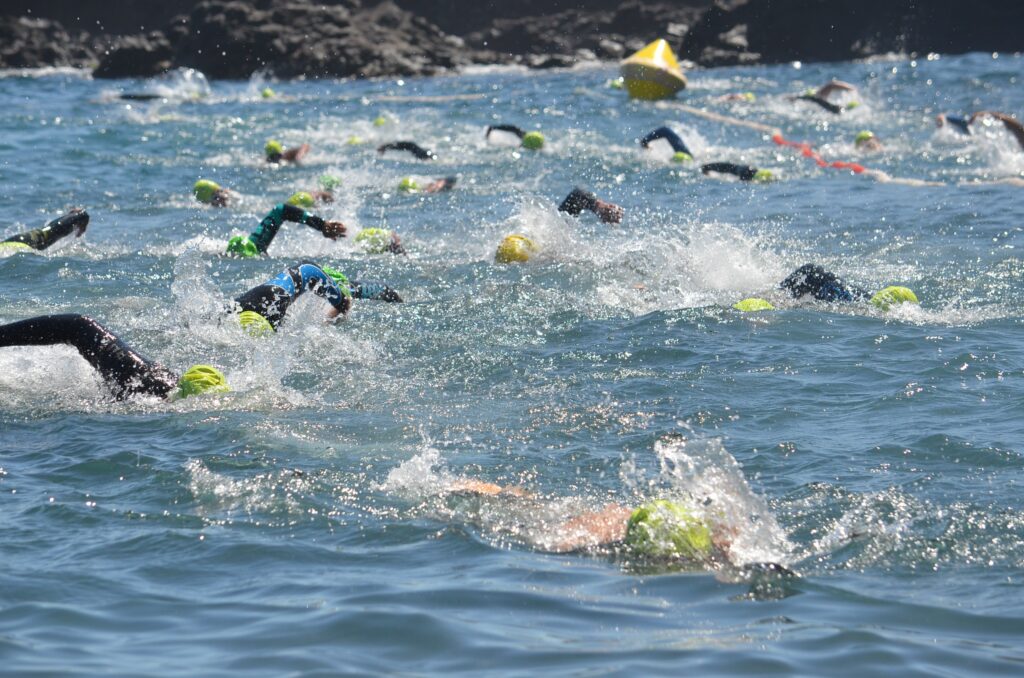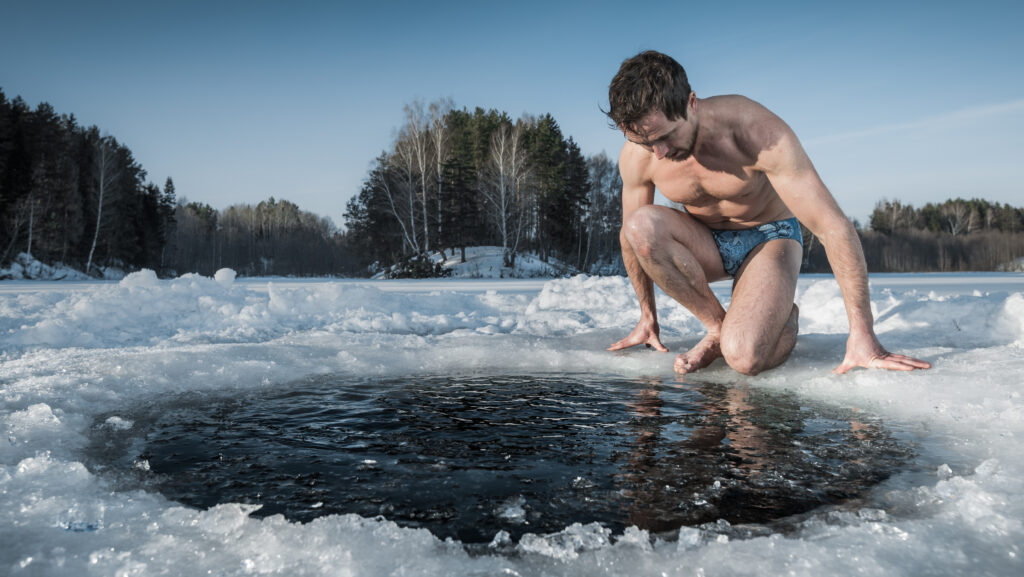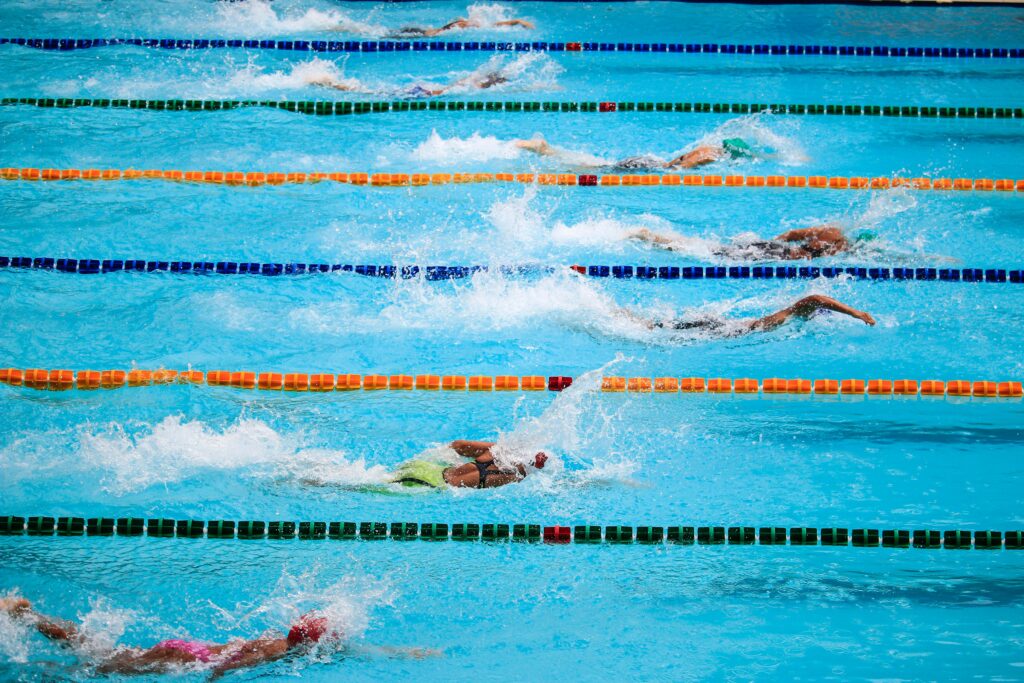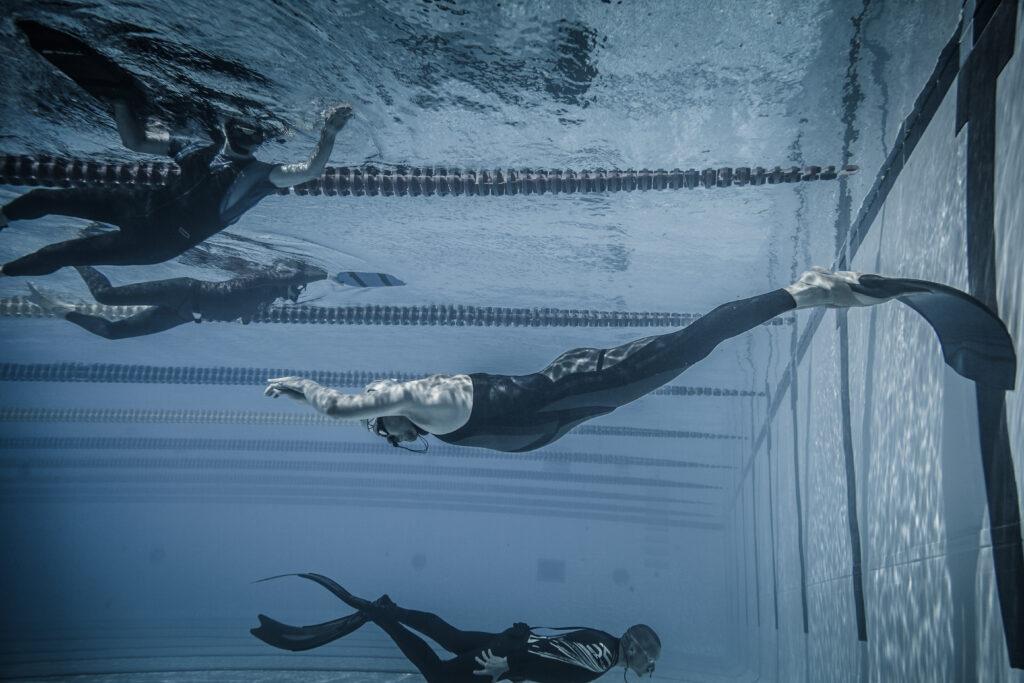If you’re new to triathlon, the swimming leg can be daunting. However, even experienced triathletes can struggle with this leg of the race. Swimming is a full-body workout that requires technique, endurance, and mental strength. In this article, we will provide you with tips on how to train for the swimming leg of a triathlon.
Understanding the importance of swimming in triathlon is crucial. It is the first leg of the race and can set the tone for the rest of the event. A strong swim can give you a head start and boost your confidence for the rest of the race. Assessing your current swimming ability is also important. This will help you set realistic goals and design a training plan that is tailored to your needs.
Key Takeaways
- Understanding the importance of swimming in triathlon is crucial.
- Assessing your current swimming ability is important to set realistic goals.
- Designing a training plan that is tailored to your needs is key to success.
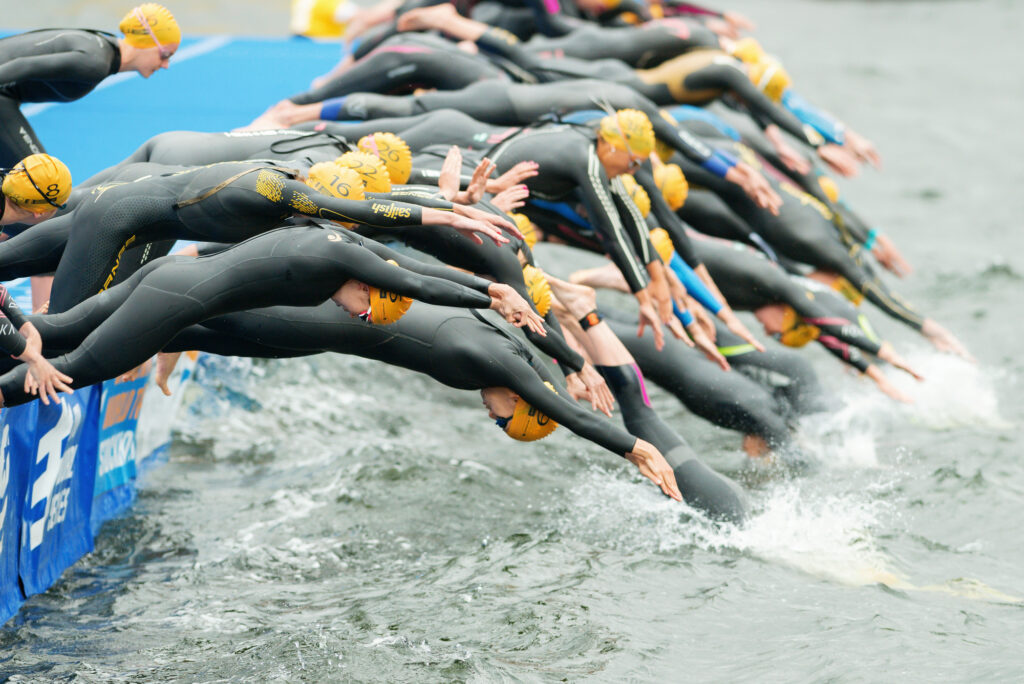
Understanding the Importance of Swimming in Triathlon
As triathletes, we know that swimming is the first leg of the race, and it sets the tone for the rest of the event. A good swim can help us gain a significant advantage over our competitors, while a poor swim can put us at a disadvantage.
Swimming is also an essential part of triathlon training. It is a low-impact exercise that helps us build endurance, strength, and flexibility. Swimming helps us develop our cardiovascular fitness, which is crucial for the other two legs of the triathlon.
Moreover, swimming is a technical sport, and it requires a lot of skill and practice to master. Improving our swimming technique can help us swim faster and more efficiently, which can save us time and energy during the race.
In addition, swimming is an excellent way to cool down after a hard run or bike workout. It helps us recover faster and reduces the risk of injury. Swimming is also a great way to cross-train and work on our overall fitness.
To summarise, swimming is a crucial part of triathlon training and racing. It helps us build endurance, strength, and flexibility, and it is an excellent way to improve our cardiovascular fitness. Swimming is also a technical sport that requires skill and practice, and improving our technique can help us swim faster and more efficiently. Finally, swimming is an excellent way to cool down, recover faster, and cross-train.
Assessing Your Current Swimming Ability
Before we start training for the swimming leg of a triathlon, it’s important to assess our current swimming ability. This assessment will help us identify our strengths and weaknesses and determine where we need to focus our training efforts.
To assess our current swimming ability, we can start by measuring our swim speed and endurance. We can time ourselves swimming a set distance, such as 100m or 200m, and record our time. This will give us a baseline to work from and help us track our progress as we continue to train.
Another way to assess our swimming ability is to evaluate our stroke technique. Proper technique is essential for efficient swimming, and it can make a big difference in our overall performance. We can ask a coach or experienced swimmer to observe our stroke and provide feedback on areas that need improvement.
In addition to measuring our swim speed and evaluating our stroke technique, we should also consider our overall comfort level in the water. Some triathletes may feel confident and comfortable in the pool but struggle in open water, where conditions can be more challenging. If this is the case, we may need to focus on open water swimming skills, such as sighting and navigating around buoys.
Finally, we should also take into account our overall fitness level and any physical limitations we may have. Swimming is a demanding sport that requires strength, endurance, and flexibility. If we have any injuries or physical limitations, we may need to modify our training plan to accommodate these limitations.
By assessing our current swimming ability, we can develop a more effective training plan that addresses our specific needs and helps us achieve our goals. With the right training and practice, we can improve our swimming skills and become more confident and successful triathletes.
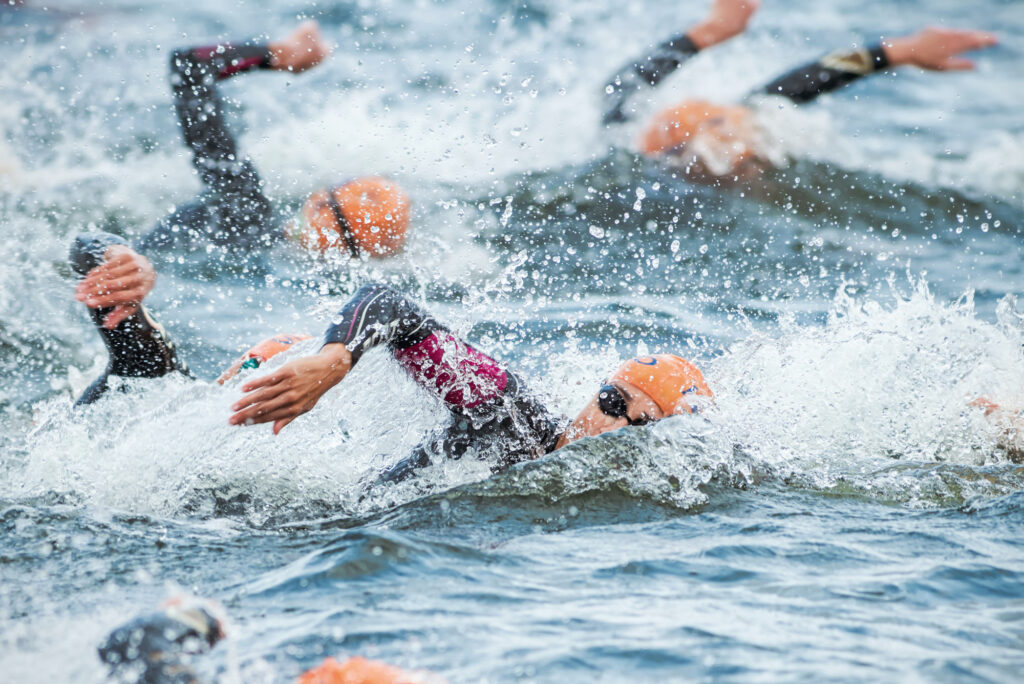
Setting Realistic Goals
Setting realistic goals is essential when training for the swimming leg of a triathlon. We need to set goals that are challenging yet achievable. Here are some tips to help us set realistic goals:
Use the SMART Method
The SMART method is an effective tool for setting goals. SMART stands for Specific, Measurable, Achievable, Relevant, and Time-bound. When setting our swimming goals, we need to make sure they meet these criteria. For example, instead of setting a vague goal like “swim faster,” we can set a specific goal like “swim 100m in under 2 minutes by the end of the month.” This goal is measurable, achievable, relevant, and time-bound.
Break Down the Goal
Breaking down our goal into smaller, achievable milestones can help us stay motivated and on track. For example, if our goal is to swim 1500m in under 30 minutes, we can break it down into smaller milestones like swimming 500m in under 10 minutes or swimming 1000m in under 20 minutes. Achieving these milestones will give us a sense of progress and help us stay motivated.
Consider Our Current Fitness Level
When setting our swimming goals, we need to consider our current fitness level. Setting goals that are too challenging can lead to frustration and demotivation. On the other hand, setting goals that are too easy can lead to complacency. We need to find the right balance between challenge and achievability based on our current fitness level.
Be Realistic
We need to set realistic goals based on our abilities and limitations. For example, if we have never swum before, setting a goal to swim 1500m in under 30 minutes in a month is not realistic. We need to set goals that are challenging yet achievable based on our current abilities.
Setting realistic goals is crucial when training for the swimming leg of a triathlon. We need to use the SMART method, break down our goals, consider our current fitness level, and be realistic to set goals that are challenging yet achievable.
Designing a Training Plan
When it comes to training for the swimming leg of a triathlon, having a well-designed training plan can make all the difference. Here are some key factors to consider when creating your own training plan.
Creating a Weekly Schedule
One of the most important aspects of designing a training plan is creating a weekly schedule that fits your needs and goals. This schedule should include a mix of swim workouts, strength training, and rest days.
When planning your swim workouts, consider the distance and intensity of each swim, as well as the specific skills you want to work on. For example, you might focus on building endurance one day and working on your stroke technique the next.
Incorporating strength training into your weekly schedule can also be beneficial for improving your swimming performance. Strength training can help you build muscle, improve your posture, and prevent injury. Consider adding exercises such as squats, lunges, and pull-ups to your routine.
Finally, be sure to include rest days in your weekly schedule. Rest days are essential for allowing your body to recover and preventing burnout.
Incorporating Strength Training
In addition to incorporating strength training into your weekly schedule, it’s important to make sure you’re doing the right exercises. When it comes to swimming, exercises that target your upper body and core are particularly important.
Some effective strength training exercises for swimmers include:
- Pull-ups
- Push-ups
- Dumbbell rows
- Planks
- Russian twists
When doing strength training exercises, be sure to use proper form to avoid injury. If you’re new to strength training, consider working with a personal trainer to learn the proper techniques.
Including Rest Days
As mentioned earlier, rest days are an essential part of any training plan. Rest days give your body time to recover and rebuild, which can help prevent injury and improve performance.
When planning your rest days, consider your overall schedule and goals. For example, you might choose to take a rest day after a particularly intense swim workout or a long run.
On rest days, be sure to give your body plenty of time to rest and recover. This might include activities such as stretching, foam rolling, or taking a gentle yoga class.
Overall, designing a training plan for the swimming leg of a triathlon requires careful planning and consideration. By creating a weekly schedule that includes swim workouts, strength training, and rest days, you can improve your performance and achieve your goals.
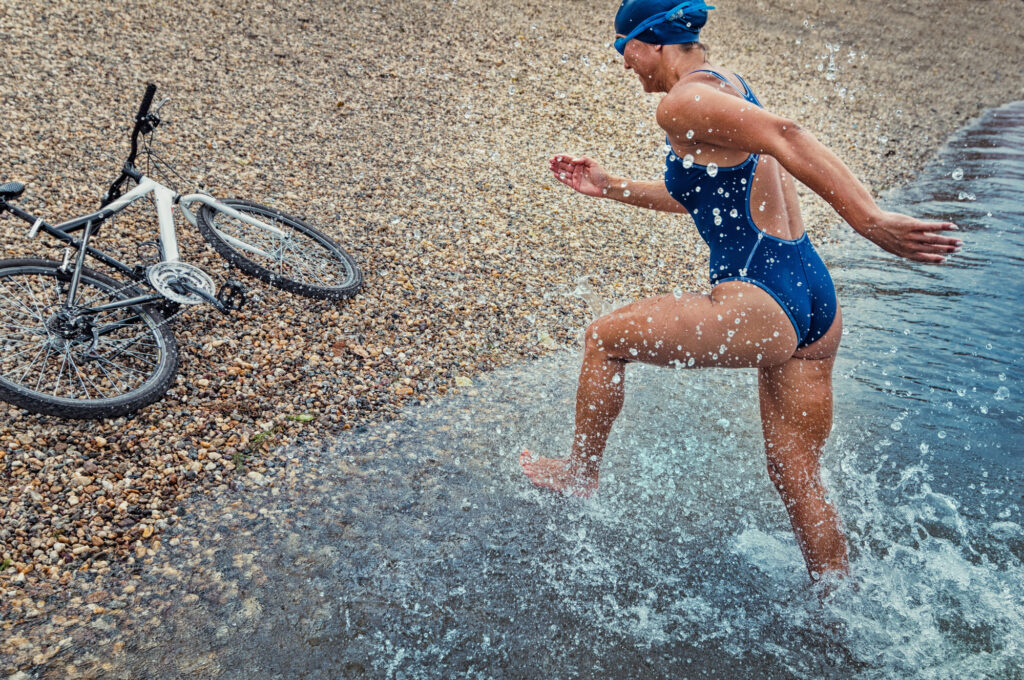
Techniques for Efficient Swimming
Swimming is an integral part of a triathlon, and it is essential to master efficient swimming techniques to conserve energy for the rest of the race. In this section, we will discuss the two most important techniques for efficient swimming: breathing and stroke improvement.
Breathing Techniques
Breathing is a crucial aspect of swimming, and it is important to get it right to avoid fatigue and ensure efficient oxygen intake. Here are some tips to improve your breathing technique:
- Exhale underwater: Exhaling underwater allows you to inhale fresh air when you turn your head to breathe. This technique ensures that you are not holding your breath and helps you avoid hyperventilation.
- Breathe out slowly: When you exhale, do it slowly and steadily. This technique helps you conserve energy and ensures that you have enough air when you need it.
- Turn your head to the side: When you turn your head to breathe, turn it to the side, not up. Turning your head up will cause your hips to drop, which creates drag and slows you down.
Stroke Improvement
Stroke improvement is essential to ensure that you are not wasting energy on unnecessary movements. Here are some tips to improve your stroke:
- Keep your body horizontal: Your body should be horizontal in the water, and your head should be in line with your spine. This technique ensures that you are streamlined and reduces drag.
- Use your core muscles: Engage your core muscles when you swim, and avoid using your arms and legs excessively. This technique helps you maintain a stable body position and reduces fatigue.
- Use a high elbow recovery: When you recover your arm after a stroke, keep your elbow high. This technique reduces drag and helps you maintain your momentum.
By incorporating these techniques into your swimming training, you can improve your efficiency and conserve energy for the rest of the race.
Open Water Training
When it comes to triathlon, the open water swim can be the most challenging part of the race. Training in a pool is great for building endurance and technique, but it doesn’t always prepare you for the unpredictable conditions of open water. Here are a few tips for training in open water:
Find a Safe Location
Before you start training in open water, it’s important to find a safe location. Look for a designated swimming area with lifeguards on duty. It’s also a good idea to swim with a buddy or a group for added safety.
Practice Sighting
Sighting is an important skill to master for open water swimming. In a pool, you can easily follow the black line on the bottom of the pool to stay on course. But in open water, there are no lines to follow. Practice lifting your head every few strokes to look for landmarks or buoys that mark the course.
Get Used to the Temperature
Open water can be much colder than a heated pool. It’s important to acclimate yourself to the temperature before race day. Start by gradually increasing the amount of time you spend in open water. You can also try wearing a wetsuit to help keep you warm.
Practice Drafting
Drafting is a technique where you swim closely behind another swimmer, taking advantage of the reduced resistance in their wake. It can help conserve energy and improve your overall swim time. Practice drafting with a partner during your open water training sessions.
Be Prepared for the Conditions
Open water conditions can be unpredictable. It’s important to be prepared for anything. Practice swimming in choppy water, waves, and currents. You can also practice swimming in low light conditions to simulate early morning race starts.
Overall, open water training can be challenging, but it’s an essential part of preparing for a triathlon. By following these tips and practicing regularly, you’ll be ready to tackle the swim leg of your next race with confidence.
Injury Prevention and Safety Measures
When it comes to the swimming leg of a triathlon, injury prevention and safety measures are crucial. Here are some tips to help keep you safe and injury-free during your training:
Warm-up and Cool-down
Before and after each swim, we recommend warming up and cooling down properly. This helps to prepare your muscles for exercise and aids in recovery. A good warm-up should include light cardio exercises and dynamic stretches, while a cool-down should include static stretches.
Proper Technique
Proper technique is essential when it comes to swimming. Not only does it help to improve your performance, but it also helps to prevent injuries. Make sure that you are using the correct stroke technique and that you are not overreaching or overextending your arms and legs.
Gradual Progression
It is important to increase your training intensity and duration gradually. Overtraining or pushing yourself too hard too quickly can lead to injuries such as shoulder impingement or lower back pain. We recommend increasing your training volume by no more than 10% per week.
Injury Prevention Exercises
Injury prevention exercises can help to strengthen the muscles used in swimming and reduce the risk of injury. Some exercises to consider include:
- Shoulder medial rotation exercises to improve mobility
- Trunk pillar strength exercises to improve stability and movement control
- Scapula and shoulder movement control exercises to improve strength and control
Safety Measures
In addition to injury prevention, safety measures are also important when it comes to swimming in a triathlon. Here are some tips to help keep you safe:
- Always swim in designated swim areas and follow the rules and guidelines set by the event organisers
- Use a safety buoy when training in open water to improve visibility and aid in flotation
- Wear a brightly coloured swim cap to improve visibility
- Make sure that you are properly hydrated before and during your swim
- If you experience any pain or discomfort during your swim, stop immediately and seek medical attention if necessary.
By following these injury prevention and safety measures, you can help to reduce the risk of injury and ensure a safe and enjoyable swimming leg of your triathlon.
Nutrition and Hydration for Swimming
When it comes to training for the swimming leg of a triathlon, proper nutrition and hydration are key to performing at our best. Here are some tips to help us fuel our bodies for success:
Hydration
Staying hydrated is crucial for optimal performance in the pool. We lose fluids through sweat while swimming, so it’s important to drink enough water before, during, and after our training sessions. Aim to drink at least 2 litres of water per day, and more if we are training in hot and humid conditions.
We can also consider adding electrolytes to our water to help replace those lost through sweat. Sports drinks can be a good option for longer training sessions, but be mindful of the added sugars and calories.
Nutrition
A well-balanced diet is essential for any athlete, and swimmers are no exception. Here are some key nutrients to focus on:
- Carbohydrates: Carbs are our body’s main source of fuel, so it’s important to consume enough to sustain our training. Good sources of carbs include whole grains, fruits, and vegetables.
- Protein: Protein is important for muscle repair and recovery. Aim to consume lean protein sources such as chicken, fish, and tofu.
- Healthy fats: Fats are important for energy and overall health. Focus on sources such as nuts, seeds, and avocado.
It’s also important to consume enough calories to fuel our training. Depending on our individual needs and training volume, we may need to consume more calories than the average person.
Timing
When we eat is just as important as what we eat. It’s best to eat a meal or snack containing carbs and protein 2-3 hours before our training session. This will give our bodies enough time to digest and absorb the nutrients. If we are training early in the morning, a small snack such as a banana or granola bar can provide enough energy to get us through the session.
After our training session, aim to consume a meal or snack containing carbs and protein within 30 minutes to help with muscle recovery. Good options include a protein shake, Greek yogurt with fruit, or a turkey sandwich on whole grain bread.
By following these tips and fueling our bodies properly, we can perform at our best in the swimming leg of a triathlon.
Monitoring Progress and Adjusting Your Plan
To ensure that we are making progress in our swim training, it is essential to monitor our progress regularly. Here are some ways to keep track of our progress:
1. Record Your Swim Times
Recording our swim times is one of the most effective ways to monitor our progress. We can use a stopwatch or a smartwatch to time ourselves as we swim. We can then record our times in a logbook or a spreadsheet. By doing this, we can see if we are improving our swim times over time.
2. Track Your Stroke Count
Stroke count is another measure of efficiency that we can use to monitor our progress. The fewer strokes we need per lap, the more efficient each stroke is. We can track our stroke count by counting the number of strokes we take per lap. We can then record our stroke count in our logbook or spreadsheet. By doing this, we can see if we are improving our stroke count over time.
3. Use a Heart Rate Monitor
Using a heart rate monitor can help us monitor our progress and adjust our plan accordingly. We can use a heart rate monitor to track our heart rate during our swim sessions. By doing this, we can see if we are working at the right intensity level to improve our swim performance. We can then adjust our plan accordingly if we need to increase or decrease our intensity level.
4. Adjust Your Plan Regularly
Adjusting our plan regularly is essential to ensure that we are making progress in our swim training. We should review our logbook or spreadsheet regularly to see if we are making progress. If we are not making progress, we should adjust our plan accordingly. For example, we might need to increase our training volume or intensity level.
In summary, monitoring our progress and adjusting our plan regularly is essential to ensure that we are making progress in our swim training. We can track our progress by recording our swim times, tracking our stroke count, using a heart rate monitor, and adjusting our plan regularly. By doing this, we can improve our swim performance and achieve our goals.
Final Preparations for the Race
As the race day approaches, it is important to ensure that we are fully prepared for the swimming leg of the triathlon. Here are some final preparations that we can make to ensure that we are ready to tackle the swim:
Check the Weather
We should keep an eye on the weather forecast leading up to the race day. If the water is expected to be cold, we may want to consider wearing a wetsuit. On the other hand, if the water is expected to be warm, we may want to consider wearing a swimsuit instead. Additionally, we should be prepared for any potential weather conditions that may arise during the race.
Visualise the Race
Visualisation is a powerful tool that can help us prepare for the race mentally. We should take some time to visualise ourselves swimming through the course, from the start to the finish. This can help us mentally prepare for the race and anticipate any challenges that we may face.
Warm-Up
Before the race, we should ensure that we have warmed up properly. This can include light jogging, stretching, and some swimming drills to get our muscles ready for the race. We should also practice some starts and turns to ensure that we are comfortable with them.
Hydration and Nutrition
We should ensure that we are properly hydrated and fuelled leading up to the race. This can include drinking plenty of water and eating nutritious foods. On the day of the race, we should eat a light meal a few hours before the start time to ensure that we have enough energy for the race.
Equipment Check
Finally, we should ensure that we have all the necessary equipment for the race. This includes our swimsuit or wetsuit, goggles, and swim cap. We should also ensure that our goggles are properly adjusted and that our swim cap fits comfortably. Additionally, we should check that our timing chip is properly attached to our ankle.
By following these final preparations, we can ensure that we are fully prepared for the swimming leg of the triathlon. With the right mindset, preparation, and equipment, we can tackle the swim with confidence and achieve our goals.
Frequently Asked Questions
What are some effective swim workouts for triathletes?
Swim workouts for triathletes should focus on building endurance, improving technique, and increasing speed. Some effective swim workouts for triathletes include interval training, distance swimming, and drills that focus on specific aspects of technique. Incorporating open water swim workouts into your training can also help you prepare for the race.
How can I improve my swimming technique for the triathlon leg?
Improving your swimming technique for the triathlon leg requires practice and consistency. Some techniques to focus on include body position, breathing, and stroke mechanics. Incorporating drills into your swim workouts can help you isolate specific aspects of technique and improve your overall form. Consider working with a swim coach or joining a swim club to get feedback and guidance on your technique.
What gear is recommended for triathlon swim training?
The gear recommended for triathlon swim training includes a swimsuit, goggles, and a swim cap. Consider investing in a wetsuit if you plan to compete in open water races or train in colder water temperatures. Other gear that can be helpful include swim fins, paddles, and a pull buoy, which can help you focus on specific aspects of technique and build strength.
What is a good sprint triathlon swim training plan?
A good sprint triathlon swim training plan should focus on building endurance, improving technique, and increasing speed. A typical plan may include 2-3 swim workouts per week, with a mix of interval training, distance swimming, and drills that focus on specific aspects of technique. Consider incorporating open water swim workouts into your training to prepare for race day.
How often should triathletes swim to prepare for the race?
Triathletes should aim to swim at least 2-3 times per week to prepare for the race. Consistency is key, so it’s important to establish a regular swim routine and stick to it. As race day approaches, consider increasing the frequency and intensity of your swim workouts to ensure you’re fully prepared for the swim leg of the race.
Are there any specific drills to improve my Half Ironman swim time?
There are several drills that can help improve your Half Ironman swim time, including kick drills, stroke drills, and breathing drills. Kick drills can help you build leg strength and improve body position, while stroke drills can help you isolate specific aspects of technique and improve your overall form. Breathing drills can help you increase your lung capacity and improve your breathing technique. Consider working with a swim coach or joining a swim club to get feedback and guidance on which drills are best for you.

